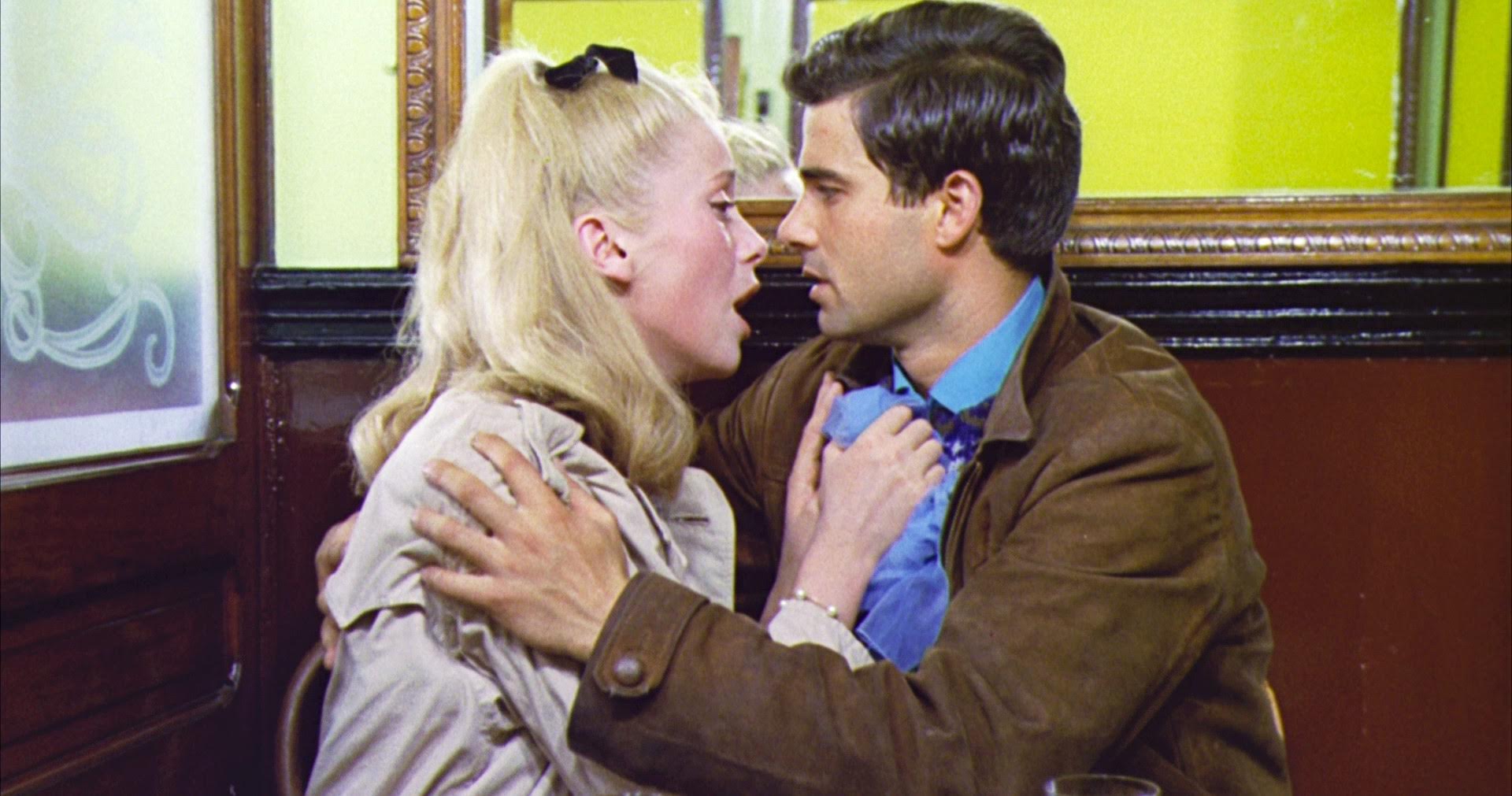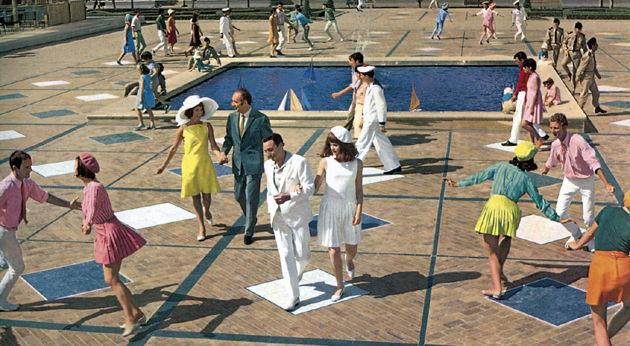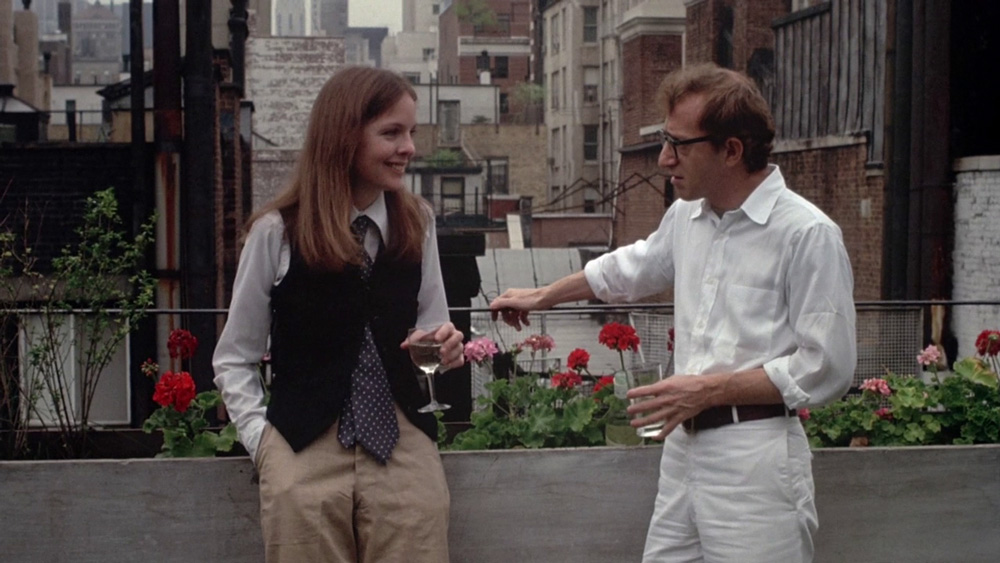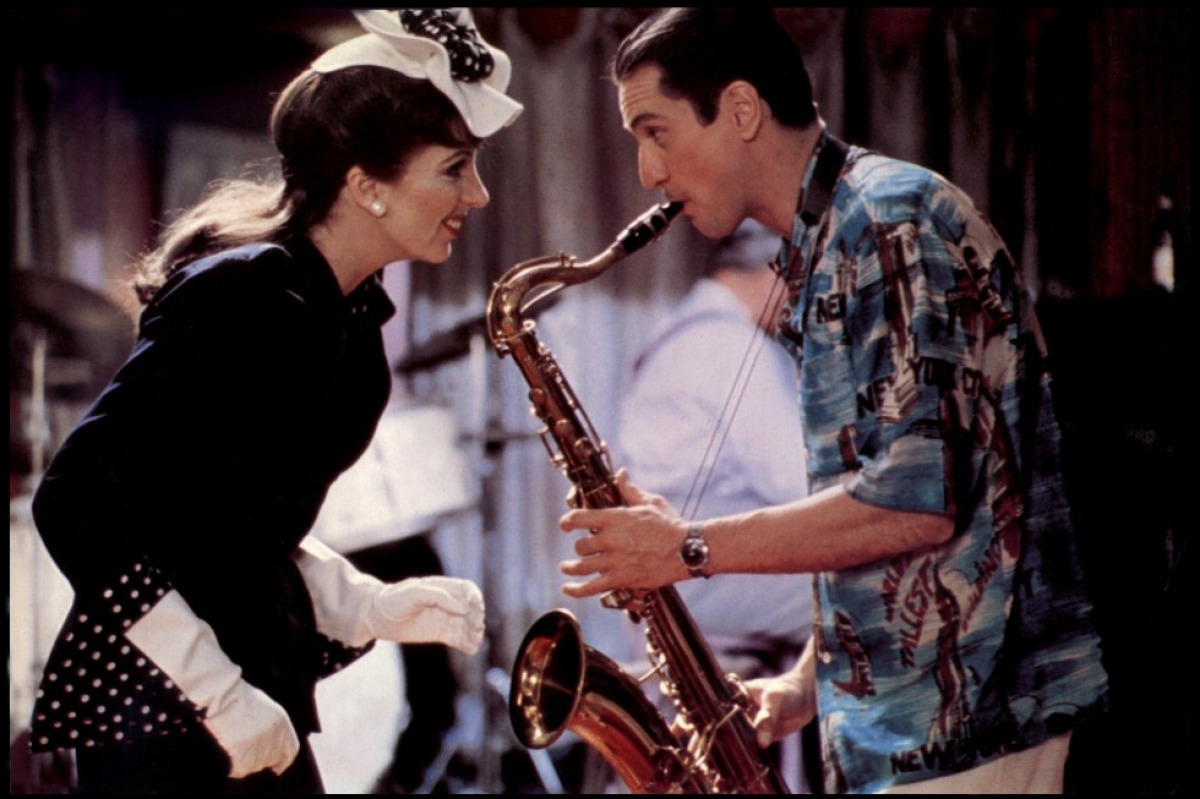6. West Side Story (1961) dir. Robert Wise and Jerome Robbins

Much like Casablanca, West Side Story has come to embody romance of the modern era, which is sort of unavoidable given that it’s an adaptation of Romeo and Juliet. In fact, it very much resembles the subplot worked into The Band Wagon, of creating a modern retelling of Faust.
La La Land’s closest homage to the Sondheim classic is with the tune “Someone in the Crowd” where Mia’s friends convince her to go out and meet someone, resembling the number “I Feel Pretty.” Purely saturated and character-assigned colors involved in both cases are also important to note.
7. The Umbrellas of Cherbourg (1964) dir. Jacques Demy

Probably the most structurally similar film on this list. Umbrellas achieves, perhaps, exactly what Chazelle set out for with La La Land in that it occurs in phases. Both films are divided into seasonal chapters. Both films greatly deal with long-distance detachment and the strains that spaces can have on a relationship.
Most of all, though, might be the surprising slice of reality given by each. Umbrellas does something interesting, though. In the same vein as an opera, the music is a direct part of the action and story. Typically, musicals use music a means of suspending the story to personify the thoughts and emotions of its characters. Umbrellas doesn’t stop the story at any point with music.
Every word is in some form an expression of the present. The words sung and actions taken have immediate consequence. Everyone wears their hearts on their sleeves and everyone lacks the proper time to think.
This is most evident by the film’s end. Just like Chazelle’s film, though with less consent, as both characters chose their own path and reflect on what’s lost.
8. The Young Girls of Rochefort (1967) dir. Jacques Demy

The most direct comparison one could make between Rochefort and La La Land would be their openings. Both feature highly choreographed dance numbers set on a bridge, whose characters head toward a city of which the films are set. It’s a tried a true way of ‘unlocking’ the viewer to the film itself. A perfect sort of preamble that opens the curtains for what lies ahead. But a stark contrast between the two are found in the costume choices.
In La La Land, multiracial characters, donning variously colored garb, dance and sing excitedly on a highway entering Los Angeles. Rochefort’s opening can be considered much humbler. Its dancers all don heavy bland-grey work jackets, smiling to each other, stretching, quietly dancing to patient, wordless, jazz. It’s an interesting contrast, especially when considering which sends a stronger message of uniformity.
Another key similarity is the music. “The Twins” theme featured throughout Rochefort is similar to La La Land’s “Planetarium”, especially when transcribed through jazz and other forms during its “Epilogue”.
Also present, as was the case in Umbrellas, was a sort of ‘life goes on’ attitude towards love and adventure set against the idyllic backdrop of a musical. Unlike Umbrellas, however, Rochefort has classic musical tropes such as concise breaks between the music and action as well as Shakespearean levels of dramatic irony. La La Land choses to trade, however this for a more solemn tone.
9. Annie Hall (1977) dir. Woody Allen

While golden-age Hollywood musicals seems to hold the bulk of La La Land’s visual influence, the emotional weight of the story seems to move to the same reflective and poignant shuffle found in Allen’s masterpiece. Unlike the swing and jazzy classics featured on this list, it seems more justified to say that La La Land’s feet don’t tap or jive but rather drag and step.
Woody Allen’s way with joy and snark self-reflection says something about his ability to acknowledge the reality of human contact. Chazelle attempts the same. But where Demy or Minnelli would simply have the audience assume the characters’ affections (through trope), Allen would build it through dialogue and time.
It’s no secret that his and Diane Keaton’s banter are one of the most renown in film. Chazelle tries to grasp Allen’s wit, but fails, so instead settles with the golden-age charisma of Bogart and Bergman, or Grant and Bergman (something Allen ceaseless renounces and even parodies).
But despite, the language and high-stakes found in those golden-age classics come off as ingenuine for a film as self-aware and considerate as La La Land. What it comes down to are the quiet moments, the metaphorical missteps between intuition and doubt that all secure Annie Hall’s indelible influence on the La La Land’s movement and tone.
10. New York, New York (1977) dir. Martin Scorsese

It wouldn’t be a stretch to imagine Sebastian and Mia’s relationship resembling the fate of Francine (Vincente Minnelli’s daughter, Liza Minnelli) and Jimmy (Robert DeNiro) from Scorsese’s jazz musical.
While it can be said that both films follow similar trajectories and conclusions, it is clear that Scorsese abandoned the same level of pleasure that was found in Minnelli or Demy’s films. As what comes with post-film school and neo-everything directors, the past is often used as an idyllic window to broaden the throes of reality.
What seems to be found in Scorsese’s film is the base-most element of Chazelle’s thematic obsessions: Using technical and aesthetic skill to encase the audience in the dark theater, but never allowing them to forget the disappointments that wait outside it.
Chazelle’s 2014 film Whiplash portrays the Sisyphean task of attaining artistic mastery in a hyperbolic sense. It is the same case in Scorsese’s film while also dealing with the journey’s effect on romance, a theme which Whiplash only grazes.
Where Demy and Minnelli sought to bend reality as a means to please, Scorsese and Chazelle seem mainly to do so for pain or for disappointment. In La La Land, however, Chazelle attempts to meld the two camps into one, but ultimately lands back with Scorsese.
Author Bio: Travis Cohen is a great many few things: a bookseller, a media and film critic, a writer of screenplays, and a drummer/sometimes street performer. He currently lives in Boston, MA, where he sometimes leaves the house. Follow him on Twitter @NorthNo9.